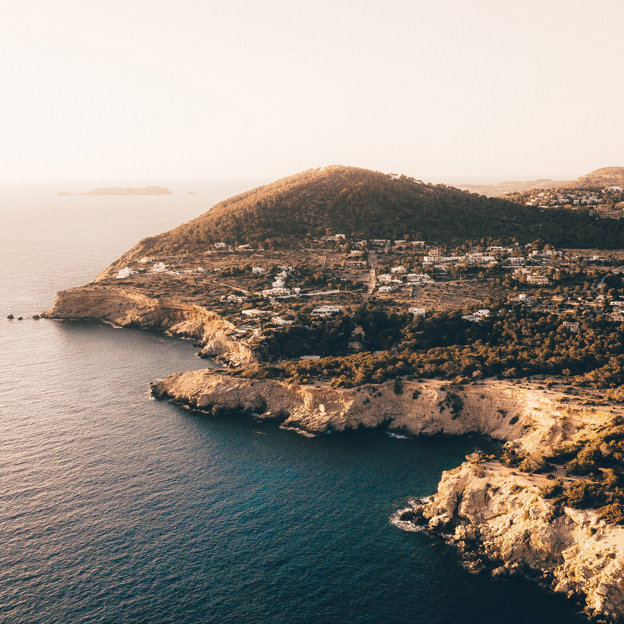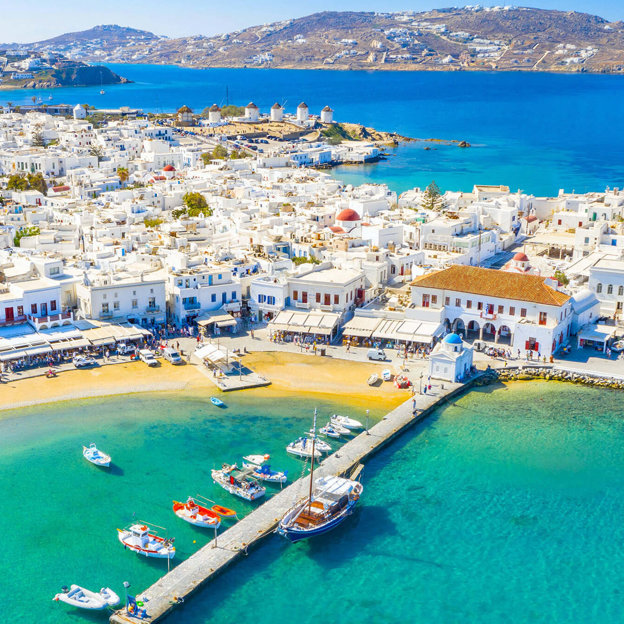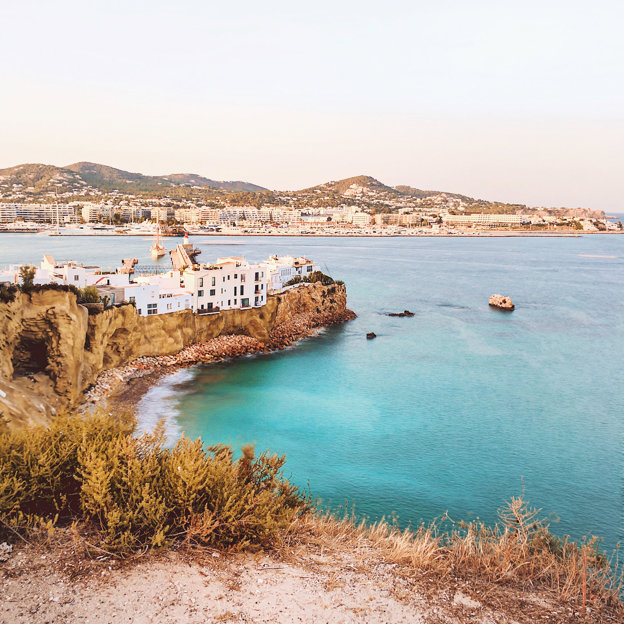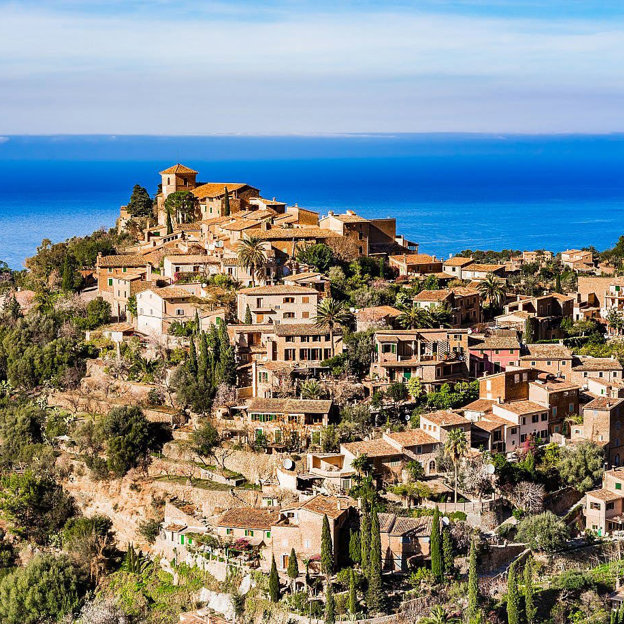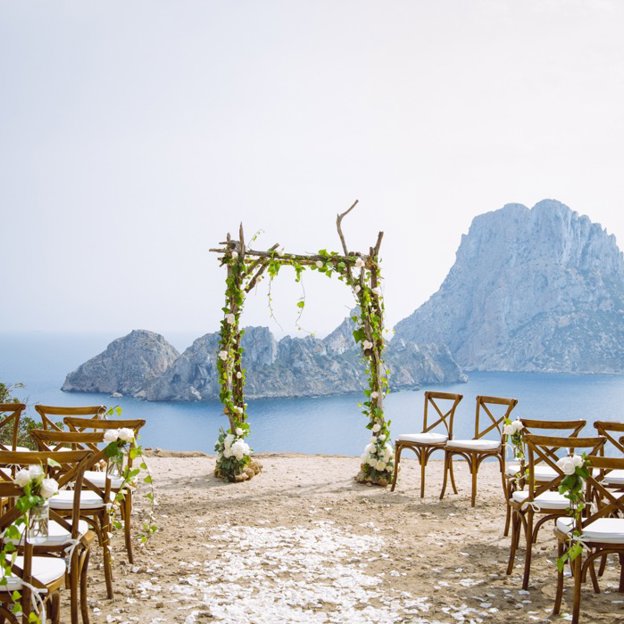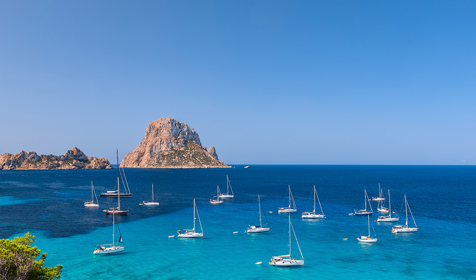5 Facts About Ibiza You Didn't Already Know
Ibiza.
The White Isle.
The Party Island.
What name do you know this place by?
The clubs, parties, beaches and coastline are well-known around the world, however, beyond this lies a truly captivating island with a rich history, diverse culture, and intriguing secrets waiting to be discovered.
Delve deeper into the heart of Ibiza, and you'll uncover ancient civilisations, a strong artistic scene, and a unique way of life that has been shaped by centuries of tradition and innovation. Ibiza is one of those islands that reveals its true magic only to those who venture beyond the surface.
This blog will dive into some interesting facts about Ibiza that might surprise you - no matter if you’re a first-timer or a seasoned traveller.
1. Ibiza is home to a mystical magnetic rock
Okay, we’re sure you knew of Es Vedra already, but allow us to give you some more facts that you might not know!
Off the southwestern coast of Ibiza, rising dramatically from the turquoise waters, lies the enigmatic island of Es Vedra. This imposing limestone rock formation, towering over 400 meters above sea level, is not just a breathtaking sight; it's also shrouded in myth and magnetism. Locals whisper of compasses spinning wildly and strange occurrences in the vicinity of Es Vedra, leading many to believe it's one of the most magnetic points on Earth, rivalling even the Bermuda Triangle.
Some the legends of Es Vedra:
-
The tip of Atlantis: Some believe that Es Vedra is the tip of the legendary lost city of Atlantis, which is said to have sunk beneath the waves thousands of years ago.
-
A landing site for aliens: Others claim that Es Vedra is a landing site for extraterrestrial visitors, drawn to the island's unique energy.
-
Home to sirens and sea nymphs: In ancient mythology, Es Vedra was believed to be the home of sirens and sea nymphs who lured sailors to their deaths with their enchanting songs.
Many people are obviously drawn to these mystical tales, but you can’t deny the captivating and dramatic beauty of it. There are many hikes, picnic spots, view points and restaurants where you can admire the amazingness of it all!
If you’re looking to stay close to Es Vedra, many luxury villas in Ibiza have the perfect view.
2. Ibiza has its own unique language
While Spanish and Catalan are the official languages of the Balearic Islands, Ibiza has its own distinct dialect known as Eivissenc. This language, a variant of Catalan, is deeply rooted in the island's history and culture, reflecting its unique identity.
The Origins of Eivissenc:
-
A blend of influences: Eivissenc has been shaped by various cultures and languages over the centuries, including Phoenician, Carthaginian, Roman, Arabic, and Catalan.
-
A living language: Despite the influx of different cultures and languages, many locals are passionate about preserving their linguistic tradition.
-
A unique vocabulary and grammar: Eivissenc has its own unique vocabulary and grammar, which can be challenging for outsiders to understand.
So, if you hear a conversation that sounds like a mix of Spanish and Catalan with a unique twist, you've likely encountered Eivissenc.
3. Ibiza is a salt production hub
Salt has played a vital role in Ibiza's history, dating back thousands of years. On the south of the island is Ses Salines, a natural park with a fascinating past. Over 2,700 years ago, the Phoenicians recognised Ibiza's ideal climate and geography for salt production. They established salt pans in Ses Salines, which became a major source of "white gold" for the island.
The Salt Industry in Ibiza:
-
A valuable commodity: Salt was a valuable commodity in ancient times, used for preserving food and as a form of currency.
-
A thriving industry: The salt industry in Ibiza thrived for centuries, shaping the island's economy and trade connections.
-
A sustainable practice: Today, Ses Salines remains a working salt flat, producing high-quality sea salt using traditional methods.
You can also spot flamingoes in the area throughout the year!
4. Ibiza is home to ancient megalithic tombs
Beneath Ibiza's modern exterior lies a rich archaeological heritage that whispers tales of ancient civilisations. Scattered across the island are several megalithic tombs, remnants of a prehistoric past. One notable example is the Ca na Costa tomb, a fascinating structure built around 2000 BC. This communal burial chamber, constructed with massive stones, offers a glimpse into the lives and rituals of Ibiza's early inhabitants.
Exploring Ibiza's Megalithic Tombs:
-
A journey through time: Exploring these ancient sites is like stepping back in time, connecting with the island's ancestors and their intriguing history.
-
Architectural marvels: The megalithic tombs are impressive examples of prehistoric architecture, showcasing the ingenuity and skill of Ibiza's early inhabitants.
-
Spiritual significance: Some believe that the tombs were not only burial sites but also places of spiritual significance, used for rituals and ceremonies.
Exploring Ibiza's megalithic tombs is a must for anyone interested in history and archaeology.
5. Ibiza's coves: Hidden havens steeped in history
You may already know that Ibiza's coastline is a treasure trove of secluded coves, each with its own unique character and captivating history. But one of the lesser-known facts about Ibiza is that these hidden havens, carved into the island's rugged cliffs, have served as shelters, hideouts, and sources of livelihood for centuries.
Smugglers and Pirates in Ibiza:
-
In the past, Ibiza's coves provided refuge for smugglers and pirates who sought to evade authorities and protect their illicit cargo. The island's strategic location in the Mediterranean made it a prime spot for clandestine activities.
-
Many coves still bear the marks of their secretive past, with hidden caves and tunnels that were once used to store contraband or escape from pursuing ships.
Fishermen and Salt Workers:
-
For centuries, Ibiza's coves were also vital to the island's economy, providing sheltered harbours for fishermen and access to the salt flats of Ses Salines.
-
Small, traditional fishing villages sprang up around these coves, with their characteristic whitewashed houses and charming harbours.
-
The legacy of these industries can still be seen in the remnants of old fishermen's huts and salt warehouses that dot the coastline.
Hippies and Artists:
-
In the 1960s and 1970s, Ibiza's coves attracted a new wave of inhabitants: hippies and artists seeking an escape from mainstream society.
-
These free-spirited individuals found inspiration in the island's natural beauty and laid-back atmosphere, establishing communities and leaving their artistic mark on the coves.
-
Some coves still retain a bohemian vibe, with hidden art installations and secluded retreats that offer a glimpse into Ibiza's counter-cultural past.
Exploring Ibiza's Coves:
-
Today, Ibiza's coves remain a haven for those seeking tranquillity and natural beauty.
-
Whether you're looking for a secluded beach to relax on, a hidden cove to explore, or a glimpse into the island's rich history, Ibiza's coastline has something for everyone.
Tips for Exploring Ibiza's Coves:
-
Rent a boat or kayak to access the more remote coves.
-
Pack a picnic and enjoy a leisurely lunch in a secluded spot.
-
Bring your snorkelling gear and explore the underwater world.
-
Respect the environment and leave no trace of your visit.
By exploring Ibiza's coves, you'll not only discover hidden beaches and breathtaking scenery but also uncover a fascinating history that has shaped the island's unique character.
What did you think about these fun facts about Ibiza? Did you learn something new about our magical island?
Ibiza is a place of captivating landscapes, rich history, and unique cultural heritage. From magnetic mysteries to ancient traditions, Ibiza offers a wealth of experiences that go beyond the well-trodden tourist paths. So, the next time you visit, take some time to explore its hidden gems and discover the fascinating facts that make this island truly special.
